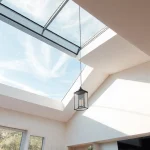Deciding whether to hire an architect for your loft conversion can shape the outcome and smoothness of the entire project. Specialists like Touchstone Lofts offer tailored designs and expert guidance on planning and regulations, often securing approvals faster than general architects. Understanding their role helps you choose the right support and unlock your loft’s full potential without unnecessary delays or costs.
Why hiring a loft conversion architect is essential for project success
Choosing an experienced specialist for your loft conversion can be the difference between a seamless upgrade and a costly headache. With an Architect for loft conversion, you gain the benefit of detailed design consultation, rigorous project compliance, and help with often complex approval processes. This page explains it in detail: Architect for loft conversion. Architects specializing in lofts understand how to maximize your space while integrating structural, insulation, and ventilation needs, removing the guesswork from design and building regulations.
Have you seen this : Top reasons to choose fibre cement board for your construction projects
Relying solely on builders or attempting a DIY approach introduces substantial risk. Many homeowners assume builder-led projects will be quicker or cheaper, but mistakes in planning, measurement, or compliance can result in rejected applications, rework, or unsafe spaces. Architects conduct comprehensive feasibility studies and prepare technical drawings, ensuring every element meets stringent UK building codes and local planning standards from day one.
Professional architects help unlock extra property value by delivering bespoke design solutions tailored to your home’s unique constraints. Their expertise often leads to innovative layouts and storage ideas, ensuring every inch is well used—enhancing both function and future resale prospects.
Also to read : Top Strategies for Boosting Privacy in Brighton”s Bustling Neighborhoods
The comprehensive role of an architect in loft conversions
Initial design consultation and feasibility assessment
An architect’s involvement begins with a thorough consultation and feasibility assessment. Precision is key: the architect reviews your attic’s dimensions, structural layout, and potential restrictions, identifying both opportunities and constraints from the outset. This stage establishes whether your property supports a loft conversion—taking into account factors such as headroom, existing roof structure, and any challenges like water tanks or chimneys. This professional evaluation gives you an accurate sense of what’s achievable and clarifies the budget scope from the start, avoiding false expectations.
Technical drawings, 3D visualization, and structural planning
Once feasibility is confirmed, architectural drawings for loft planning are prepared. These technical documents are essential for both builders and planning authorities and typically include detailed floor plans, elevation views, and sections. Many architects now offer 3D visualizations, helping clients see exactly how the space will transform. Furthermore, architects collaborate with structural engineers to ensure the new layout maintains or enhances structural integrity, factoring in insulation, fire safety, and staircase design.
Navigating planning permissions, regulatory submissions, and compliance checks
Professional architects manage the planning permission process and compliance with building regulations. They prepare and submit all required paperwork—whether for planning approval or a Lawful Development Certificate. Their expertise minimizes errors and helps secure timely approvals, while regular compliance checks ensure your conversion remains on track and fully legal throughout the project.
Planning, permits, and managing regulations for loft projects
When planning permission is required and steps for lawful development
Most loft conversions in the UK do not require planning permission if they remain within “Permitted Development” limits: up to 40m³ of additional roof space for terraced houses, and 50m³ for detached or semi-detached homes. However, permission is necessary if your project is in a conservation area, exceeds these size caps, or changes the roof profile significantly. Homeowners should obtain a Lawful Development Certificate, especially when selling the property, to confirm the work was legally permitted. The application process typically involves submitting detailed architectural drawings and a clear project brief to your local authority.
Building control, regulatory paperwork, and ensuring project legality
Regardless of planning status, all loft conversions must comply with UK building regulations. Approval is required for fire safety, structural stability, insulation, staircase installation, and ventilation. Submissions may be made as a Full Plans Application—featuring pre-checked regulation drawings—or a Building Notice, which alerts inspectors but offers less up-front certainty. Ensuring correct paperwork prevents retrospective issues, financial penalties, or challenges selling your home later.
Specialist insight: Overcoming common permit delays and legal pitfalls in UK loft conversions
Delays frequently arise from incomplete paperwork, unclear plans, or underestimating zoning or conservation constraints. Tips for smoother approval include consulting with an experienced designer, double-checking all measurements, and maintaining open communication with your local planning department. Early professional guidance helps sidestep costly mistakes and accelerates both approvals and build phases.
Comparing architect-led vs. design-and-build and online loft planning services
Architectural expertise vs. general builder solutions: pros and cons
Architects bring a deep understanding of structural possibilities and current building regulations. This expertise helps prevent errors that could diminish your property’s value or leave you with an awkward layout. Precision in loft conversion plan scaling and measurement ensures compliance and supports seamless integration with the rest of your home. Builders and design-and-build specialists can execute tried-and-tested solutions efficiently, often providing an all-in-one approach. However, their focus may lean more towards construction than unique spatial design, potentially overlooking finer design elements or regulatory details that architects address.
Digital and remote architectural services: cost savings, process, and limitations
Online platforms streamline the planning phase, with rapid 3D scanning and virtual consultations making architectural drawings both quicker and less costly—saving thousands in fees compared to traditional methods. These services excel at generating detailed plans and compliance documents for local authority approval, using digital accuracy and iterative design processes. Limitations include reduced site-specific ingenuity and the potential for overlooked issues that an in-person visit might catch, such as hidden structural concerns.
Case studies and testimonials: client outcomes with different service models
Client experiences show that traditional architects, specialist design-and-build firms, and digital services each produce compliant, valuable lofts. Those prioritizing bespoke design ideas may favor architectural consultancies, while speed-focused or cost-conscious homeowners often succeed with digital or builder-led projects. Success hinges on aligning the chosen model with the complexity of the loft and desired outcome.











